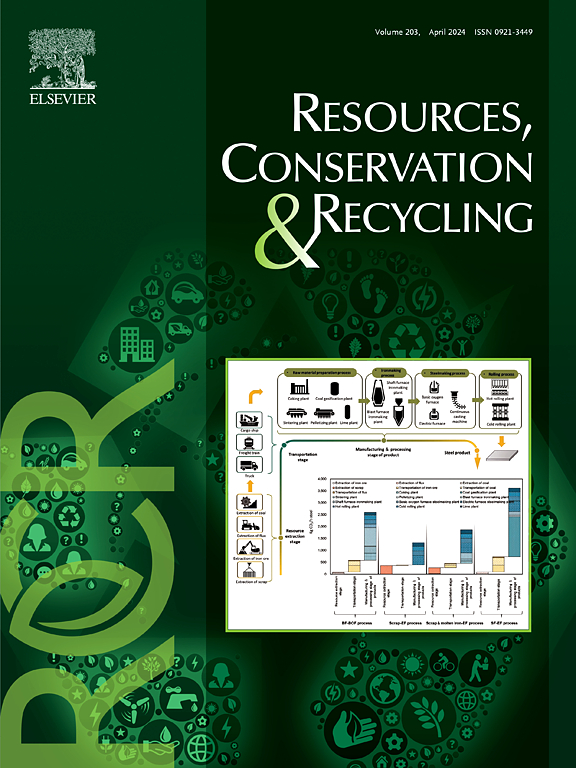Modeling the urban stock and lifecycles of bridges: An integrated framework for dynamic-locational material flow analysis
IF 11.2
1区 环境科学与生态学
Q1 ENGINEERING, ENVIRONMENTAL
引用次数: 0
Abstract
The paper introduces a dynamic-locational MFA model to analyze the urban stock of bridges by integrating quantity, time, and location in one framework. The model is developed to assess existing materials in the urban stock, predict future demolition activities, quantify material flows, and analyze their spatial distribution. The derived framework depends on the structural conditions to anticipate lifetime and survival. For the empirical analysis and demonstration, a dataset of >12,000 bridges in North Rhine-Westphalia was compiled to provide the required information such as location, area, type and material. The analyses demonstrate significant variability in material flows across different times and locations. Some regions exhibited exceptional material flows, while others had very low flows, highlighting the importance of temporal and spatial aspects. The results also predict significant material flows over the next two decades in the investigated region, underscoring the urgency of circular economy and closer cooperation between stakeholders.
求助全文
约1分钟内获得全文
求助全文
来源期刊

Resources Conservation and Recycling
环境科学-工程:环境
CiteScore
22.90
自引率
6.10%
发文量
625
审稿时长
23 days
期刊介绍:
The journal Resources, Conservation & Recycling welcomes contributions from research, which consider sustainable management and conservation of resources. The journal prioritizes understanding the transformation processes crucial for transitioning toward more sustainable production and consumption systems. It highlights technological, economic, institutional, and policy aspects related to specific resource management practices such as conservation, recycling, and resource substitution, as well as broader strategies like improving resource productivity and restructuring production and consumption patterns.
Contributions may address regional, national, or international scales and can range from individual resources or technologies to entire sectors or systems. Authors are encouraged to explore scientific and methodological issues alongside practical, environmental, and economic implications. However, manuscripts focusing solely on laboratory experiments without discussing their broader implications will not be considered for publication in the journal.
 求助内容:
求助内容: 应助结果提醒方式:
应助结果提醒方式:


